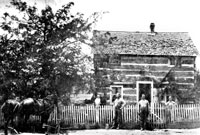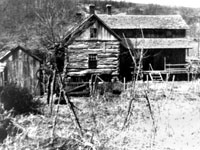
In a worldwide movement that began in earnest after World War Two, mechanization and the subsequent displacement of labor changed the face of the farming and rural landscape. That process, unyielding and accelerating, is remaking the rural landscape worldwide.
Here in Illinois the process has reached what I believe to be the landscape of the foreseeable future: the landscape of the 21st century.
In a great swath across Illinois lies some of the richest land in the world; deep, rich prairies with ancient black soils. Edging the prairies are the uplands, thin soils, but once covered with ancient hardwood forests. The fields of the prairie have a grandness that is comparable to the ocean vastness, with breathtaking horizons and an immersion in the weather that is direct and personal. The hills have a beauty, especially in the spring and fall, that is profoundly satisfying.
Across this expanse immigrants began settling in earnest at the turn of the 19th century. First the flow of people from Appalachia and the upland south poured into the hills where the forests were cleared for farms, timber, and firewood. Then onto the Grand Prairie itself where, among others, German immigrants drained the boggy soils and ripped the land with the steel tipped John Deere plow.
continued


| PAGE |<< | 1 | 2 | 3 | 4 | 5 | 6 | 7 | 8 | 9 | | ||
| D. Gorton's Home Page Jane Adams' Home Page Memory and Judgment: Mississippi The White South Contact Us |
|||||||||
|
This page was last modified on:
|
|||||||||